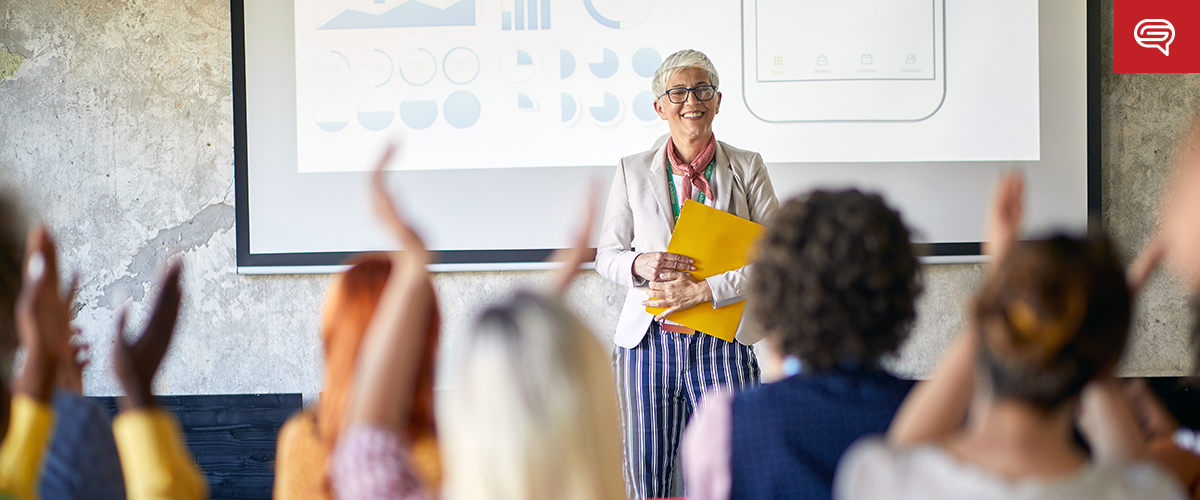A study from the University of Pennsylvania revealed that 70% of non-verbal communication is based on body language.
Among other forms of body language, eye contact plays a significant role in building a deeper connection with acquaintances, friends, and strangers. This proves that eye contact is an important part of interacting with other people.
[sg-blog-modules module=one]
Eye Contact in Non-Verbal Communication
We often forget how much our eyes contribute to our daily interactions. In most cases, we’re unaware of how our gaze can make communication more powerful and effective.
The eyes are the most expressive parts of the human body. We can determine someone’s inner thoughts or feelings by just looking at their eyes.
Conveying positive emotions and confidence is essential for any effective presenter. This works the same way for your audience. Eckhard Hess, an American psychologist and ethnologist, discovered that the our pupils dilate when we are interested in a conversation. If the pupils contract, it shows disinterest. These, in a way, gauge how effectively you can establish rapport and persuade the audience.
Here are further reasons why eye contact is necessary:
It catches attention
People lose interest if they sense a lack of passion from the presenter. Once you’ve successfully established eye contact, show them that you’re confident to stand and talk in front of them. They’ll become more attentive and interested in your pitch.
It engages the audience
Speech coach Patricia Fripp writes about the positive effects of eye contact. According to Fripp, not only is it effective in convincing people, it also boosts self-esteem, another crucial factor in delivering a winning pitch.
If you conduct business presentations, establishing stable eye contact makes the audience feel that you’re interested in them, allowing you to build trust and rapport. Make them feel that they are involved in their presentation.
It makes a good impression
Great presenters avoid looking at their notes while speaking, letting their audience read and understand the message by making eye contact.
Your audience’s first impression of your performance can either increase or decrease your credibility. Doing well makes them understand that you are knowledgeable and confident.
How long should you maintain eye contact?
Leadership trainer Dan Rockwell advises presenters to keep eye contact for at least three to four seconds per person in each group.
If you’re discussing something that’s related to your subject, know when to pause so they can catch up to the ideas you’re highlighting.
—
It takes practice to master eye contact.
Learn and practice this technique to achieve your audience’s expectations.
Since the eyes convey your emotions, you need to give off a friendly yet confident impression for your audience during presentations.
[sg-blog-modules module=two]
References
“Build Emotional Connection Through Good Eye Contact.” Patricia Fripp. 2009. Accessed May 21, 2015.
Hess, Eckhard H. “The Role of Pupil Size in Communication.” Sci Am Scientific American 233, no. 5 (1975): 110-19.
“Power Your Presentations with These Body Language Tips.” SlideGenius, Inc. 2014. Accessed May 21, 2015.
“Presentation Tips: 5 Easy Ways to Establish Your Credibility.” SlideGenius, Inc. November 04, 2014. Accessed May 21, 2015.
Rockwell, Dan. “Secrets to Great Presentations.” Leadership Freak. June 18, 2014. Accessed June 21, 2015.





